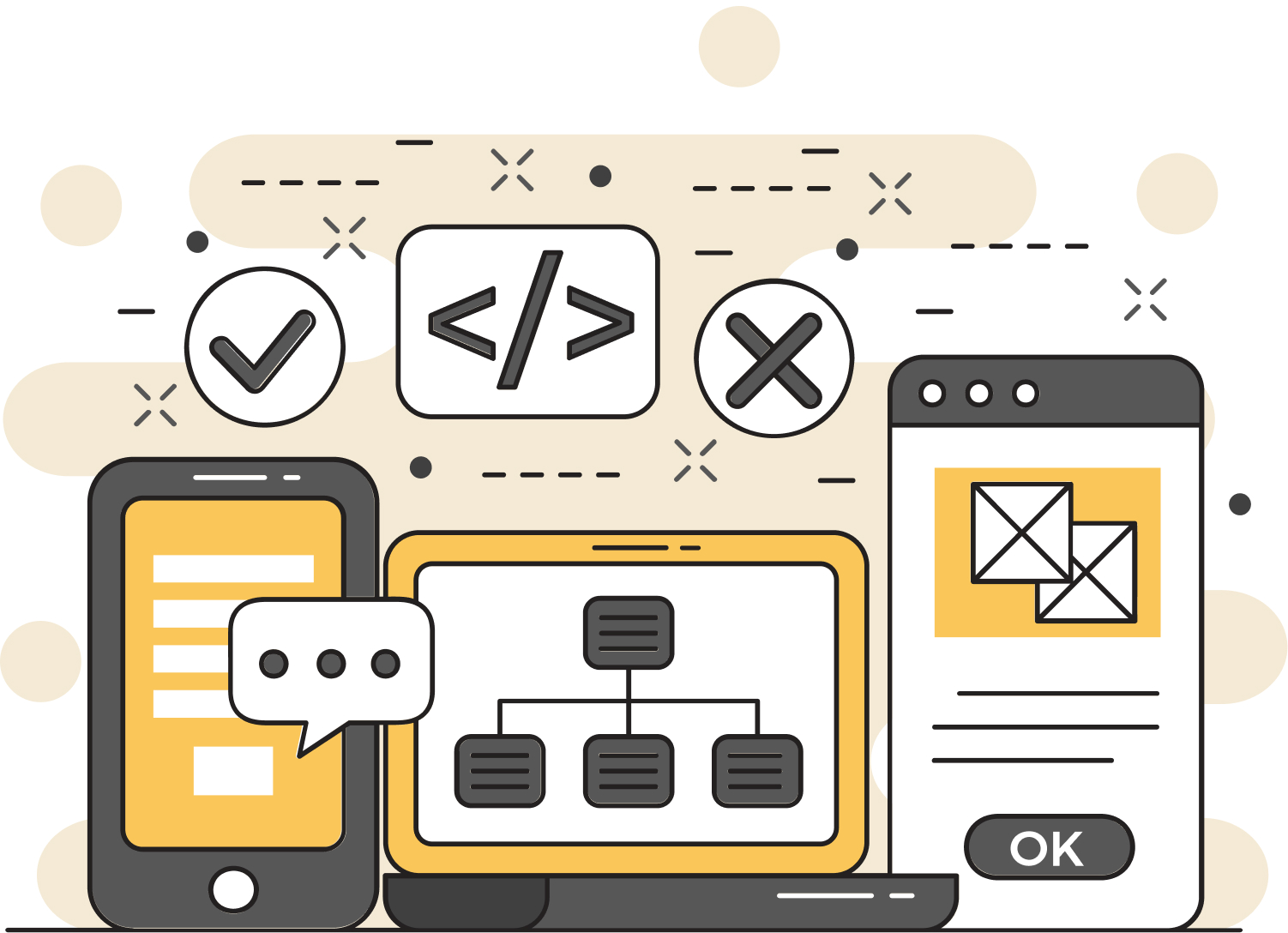We know how much we care about UX/UI design in Lumen Spei. So we’re excited to explore the importance of UI/UX design in the development process.
Digital products have become increasingly dependent on user experience as technology advances.
It’s important to understand the difference between UI and UX design. UI or User Interface design is focused on the visual elements and layout of a product, while UX or User Experience design is concerned with the overall feel and functionality of a product. UI/UX design combines user interfaces and user experiences to create visually appealing, intuitive, and easy-to-use products.
A well-designed user interface can make all the difference in providing a seamless and enjoyable experience for end-users.
The 5 fundamentals of UI/UX design
UI/UX design should always come before development, as it lays the foundation for the success of the final product. It is also a crucial part of every product development process because it ensures that the finished product meets the needs of the user.
We talked to our UI/UX designers and asked them to share what they think are the fundamentals of their work.
We’ll go through the key principles of good UI/UX design, the five fundamentals, and how they can be used to create effective user interfaces.
Whether you’re a designer, developer, or simply interested in the topic, we hope this article provides valuable insights and inspiration. Let’s get started!
#1 Usability
Usability refers to how easy it is for the user to accomplish their goals with the product. A usable interface should be easy to understand and navigate, with clear and consistent layouts and design elements.
One of the key benefits of usability in UX/UI design is that it improves the user’s experience. A product that is easy to use and navigate will be more enjoyable for the user, leading to greater satisfaction and loyalty. In contrast, a product that is difficult to use will cause frustration and may lead to users abandoning the product altogether. This is particularly important for e-commerce websites, as a poor user experience can lead to a high bounce rate, which can have a significant impact on the website’s bottom line.
To ensure that a product is usable, designers should follow a number of key principles. One of the most important principles is to keep the user in mind at all times. This means understanding the user’s goals, needs, and behaviour, and designing the product accordingly. This can be achieved through user research, which involves gathering data from users through methods such as interviews, surveys, and usability testing.
#2 Accessibility
Accessibility in UI/UX design refers to the practice of designing products that are usable by people with disabilities. This includes individuals with visual, auditory, motor, and cognitive impairments. Accessibility is an important aspect of UI/UX design because it ensures that a product is inclusive and usable by a wide range of users, regardless of their abilities.
The information and user interface components must be presented in a way that users can perceive, whether through sight, sound, or touch. This includes providing text alternatives for non-text content, captioning for videos, and providing sufficient contrast between text and background colors.
The user interface must be operable, which means that users can interact with it using a keyboard, mouse, or another input device. This includes providing keyboard shortcuts and making sure that buttons and links are large enough to be easily clicked or tapped. The information and operation of the user interface must be easy to understand. This includes providing clear instructions and labels and making sure that the navigation and layout are consistent and logical.
For more information on accessibility standards, visit W3C’s (Web Accessibility Initiative / WAI ) website.

#3 Learnability
Learnability is the ease with which a user can learn how to use a product. A learnable interface should be simple to understand and use, with simple instructions.
This can be accomplished by employing well-known patterns and conventions, as well as providing clear labels, tooltips, and other forms of guidance. Designers must consider the user’s prior knowledge and experience when creating a learnable interface and design the interface accordingly. Designers must also consider the user’s motivation and goals, and design the interface to support these goals.
#4 Aesthetics
Aesthetics refers to the visual appeal of the product. Aesthetics is important because it can affect the user’s perception of the product, and it can also help to create a sense of brand identity.
To create an aesthetically pleasing design, designers must select colors, typography, and imagery that are visually pleasing and align with the brand. To create an aesthetically pleasing design, designers must consider the product’s target audience and the emotional response they want to evoke. Additionally, designers must consider the product’s context, such as the environment in which it will be used, and design the interface accordingly.
#5 Effectiveness
Effectiveness refers to how well the product meets the needs of the user. To create an effective interface, designers must conduct user research and testing to gather feedback and make any necessary adjustments.
It is also important to continuously iterate and improve the product based on user feedback. The effectiveness of the interface can be measured by analyzing key performance indicators such as user satisfaction, task completion rate, and error rate. By considering the effectiveness of the interface, designers can ensure that the product is meeting the needs of the user and achieving its goals.

#6 Bonus: Way of thinking
An important aspect of UI/UX design is user research and empathy, but it is also the mindset of a designer. Design solutions are centered on understanding users’ needs and addressing them through understanding their needs.
UX/UI designers with a strong focus on user research and empathy will constantly strive to understand the users’ needs, goals, and behaviours, as well as their perspectives and pain points. This mindset is reflected in the way the designer approaches the design process, from conducting user research to testing and iterating on the design.
For UI/UX designers, empathy and user research are also essential to adapting to users’ changing needs. In an era where technology and user behaviour are constantly changing, a designer who understands the users’ needs and adapts to them will be able to design interfaces that are both visually pleasing and effective.
Recommended ➜ Read about the the digital transformation challenges
Lumen Spei UI/UX designers are here to help you.
Our team of experienced designers is dedicated to creating intuitive, user-friendly interfaces that will help you stand out in the crowded digital landscape.
We know that our clients want results, and we’re confident in our ability to deliver them. But that’s not all we do.
We choose the dedicated approach not only in the end product but also in the process.
That’s why we always keep our clients informed and educated throughout the process. We want to ensure that you’re not just satisfied with the end result but also understand the reasoning behind the design choices we make.
The user experience is constantly being improved and enhanced by our team. In turning our knowledge and expertise into exceptional experiences for our clients, we achieve our mission.
You can elevate your digital product with a top-notch user experience with Lumen Spei. As your product development partner, we are here to help you achieve your goals. Get started today by reaching out.

